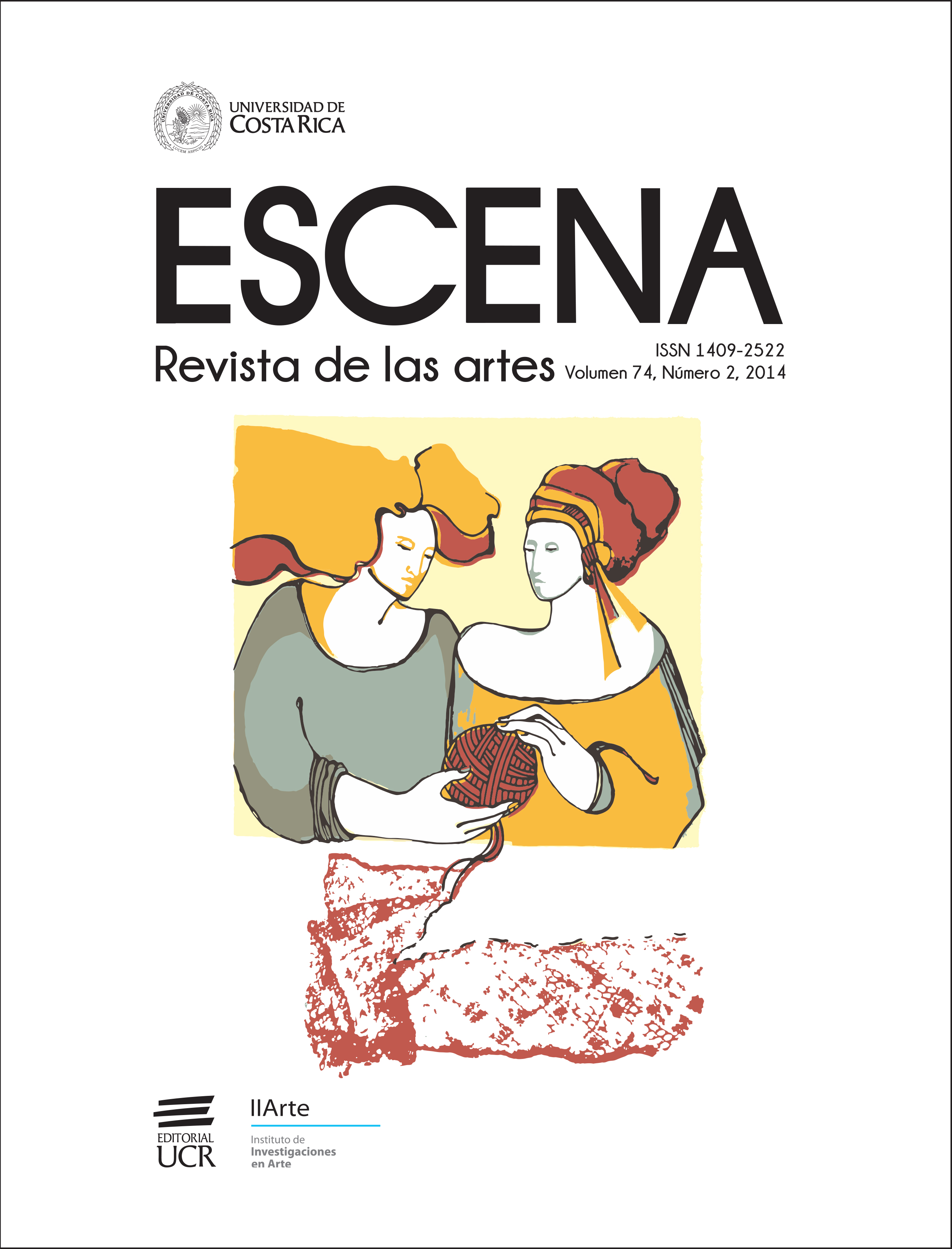Abstract
This research describes the contributions made by the Banda de Conciertos de Limón (Limón Concert Band, BCL) in the preservation and exposure of the calypso and the square dance as two main elements of the musical heritage of this province, specifically during 2009 and 2013. Relevant features of thefolklore of Limón and the trajectory of BCL were taking into account for this study, as well as the history of the arrival of these two musical genres to this province, in order to contextualize their development within the community. Also, this research proposes to understand the afro roots of Limon´s music not
only as a cultural manifestation but also as a communication channel between BCL and its audiences.
References
Buda. (1990). Cancionero. Heredia, Costa Rica: Editorial Nuestra Cultura.
Chang, G. (Comp.). (2003). Nuestra Música y Danzas Tradicionales. San José, Costa Rica: Coordinación educativa y Cultural Centroamericana (Serie Culturas Populares
Centroamericanas, 5).
Sistema de Información Cultural de Costa Rica, Sicultura - Ministerio de Cultura y Juventud. (2015). Cuadrilla. San José,
Costa Rica: Ministerio de Cultura y Juventud. Recuperado de: http://si.cultura.cr/component/sicultura/articulo/cuadrilla970.
html#sthash.pNmRpbi7.dpuf
Kuhn de Anta, F. (2006). Walter Ferguson “El Rey del Calipso”: Apunte biográfico. San José, Costa Rica: Editorial Universidad Estatal a Distancia.
Meza, G. (2010). Sonidos Mágicos (Cultura-afrolimonense). San José, Costa Rica: Editorial Alma Máter (ELAM).
_________. (2005). Square Dance y el Calypso limonense una revisión comparativa. Revista InterSedes 6 (10), 1-12.
Meza, G., y Zapata, E. (2007). La Iglesia Protestante en el Caribe de Costa Rica. San José, Costa Rica: Editorial de la Universidad de Costa Rica.
Monestel, M. (2012). El calypso como forma de literatura oral. San José, Costa Rica: La Coleccionista de Espejos Pagina de
Critica Literaria Costarricense, Arte y Cultura Latino y Centroamericana. Recuperado de: http://themirrorcollector.
blogspot.com/2012/09/el-calypso-como-forma-de-literatura-oral.html
________. (2005). Ritmo, Canción e Identidad: Una historia sociocultural del calypso limonense. San José, Costa Rica: EUNED.
Identidad Cultural, Arte y Tecnología (ICAT). (2012) . Nowhere like Limón: Antología de música afrocaribeña de Costa Rica.
Heredia, Costa Rica: Universidad Nacional (ICAT). Recuperado de: http://www.icat.una.ac.cr/nowherelikelimon/
Programa Identidad Cultural, Arte y Tecnología (ICAT). (2010). Nowhere like Limón: Antología de música afrocaribeña de Costa Rica. Heredia, Costa Rica: Universidad Nacional.
Segura, P. (2001). Desarrollo musical en Costa Rica durante el siglo XIX: Las Bandas Militares. Heredia, Costa Rica: Editorial
de la Universidad Nacional.
Vargas, M. C. (2004). De las Fanfarrias a las salas de concierto: Música en Costa Rica (1840-1940). San José, Costa Rica: Editorial de la Universidad de Costa Rica.


